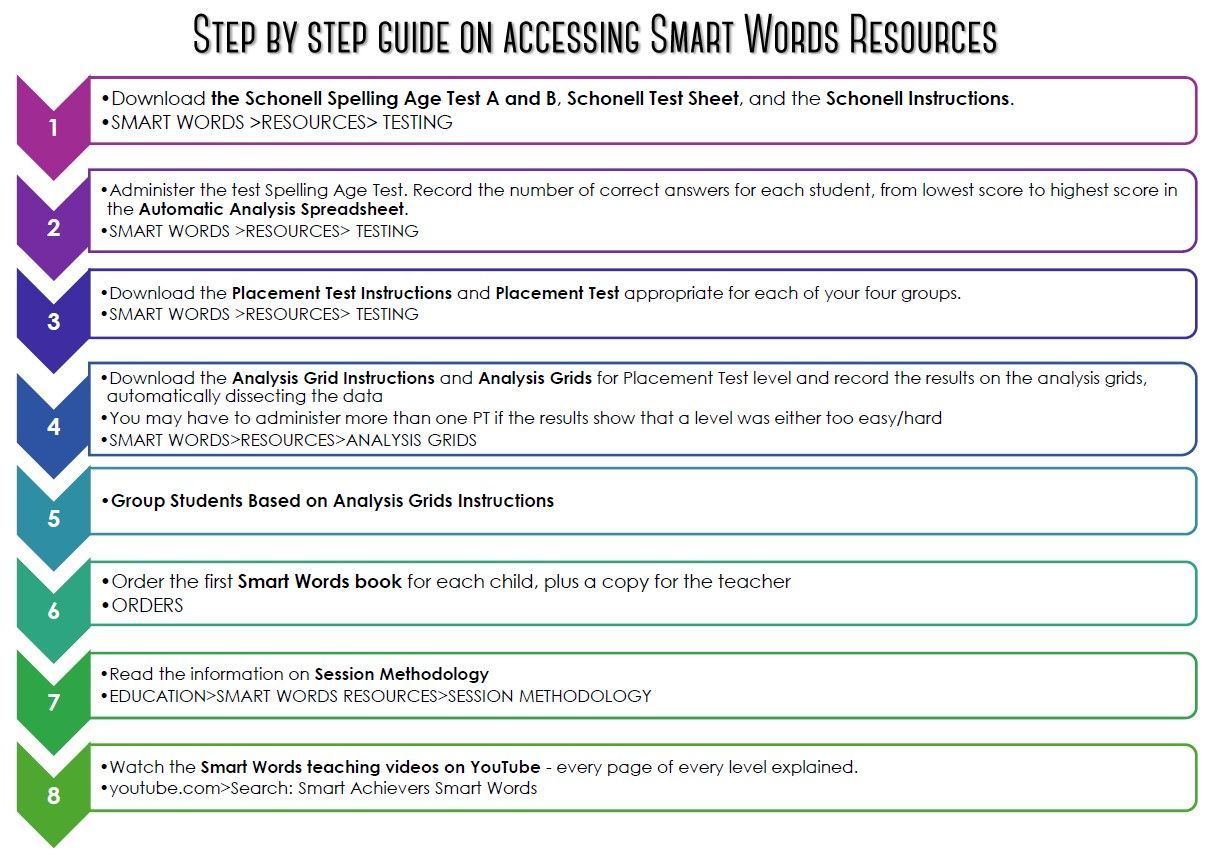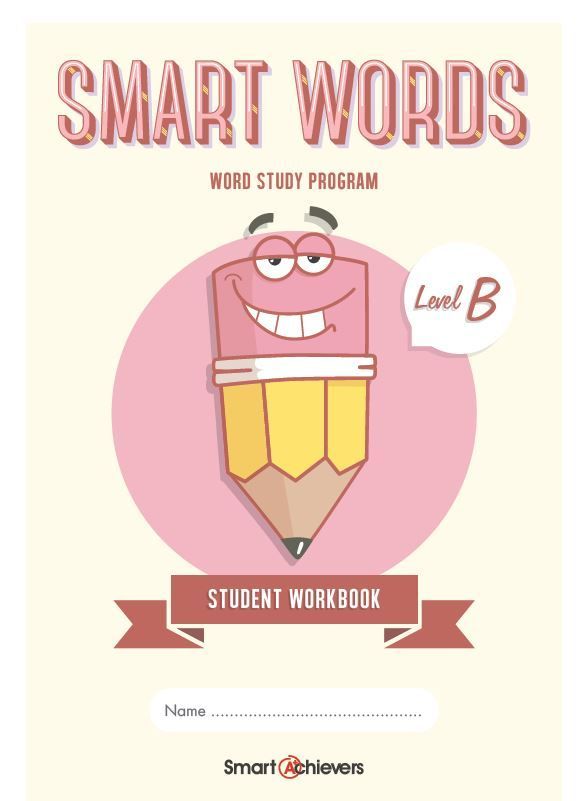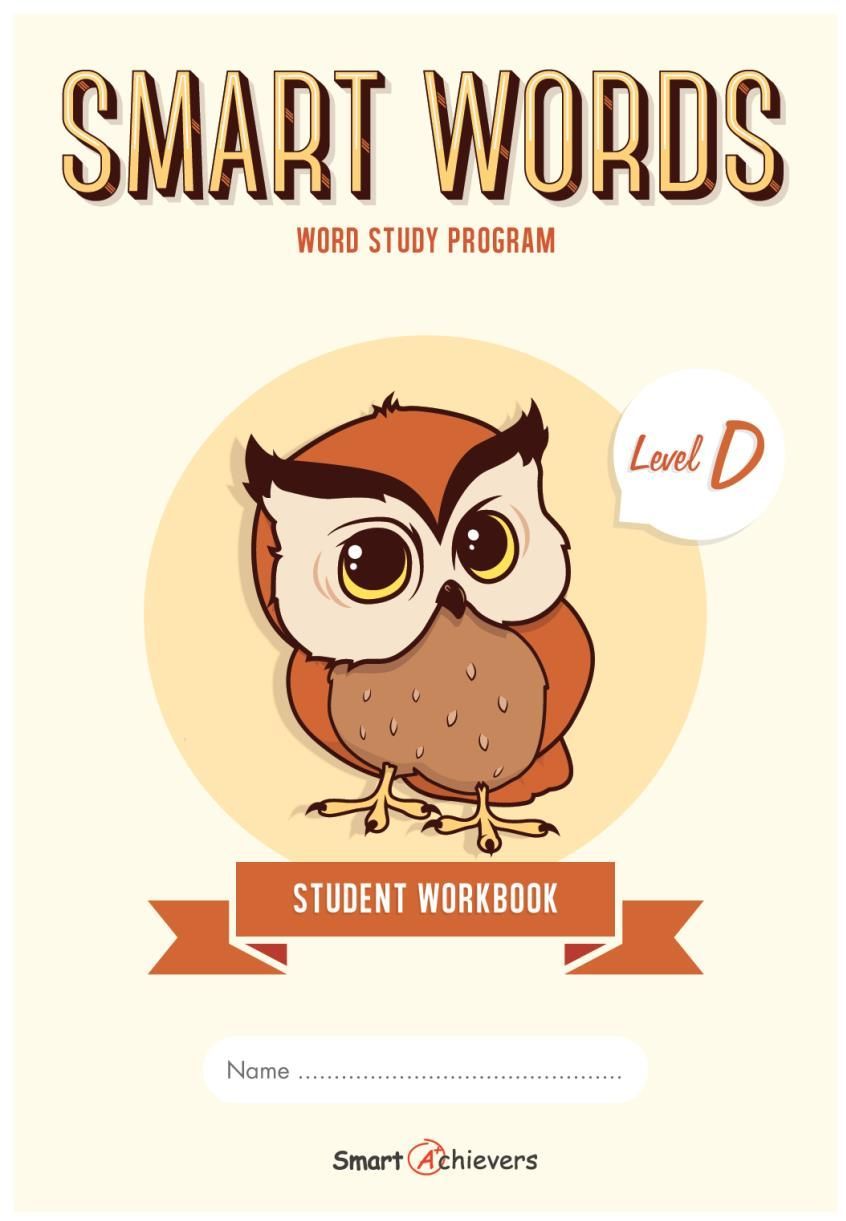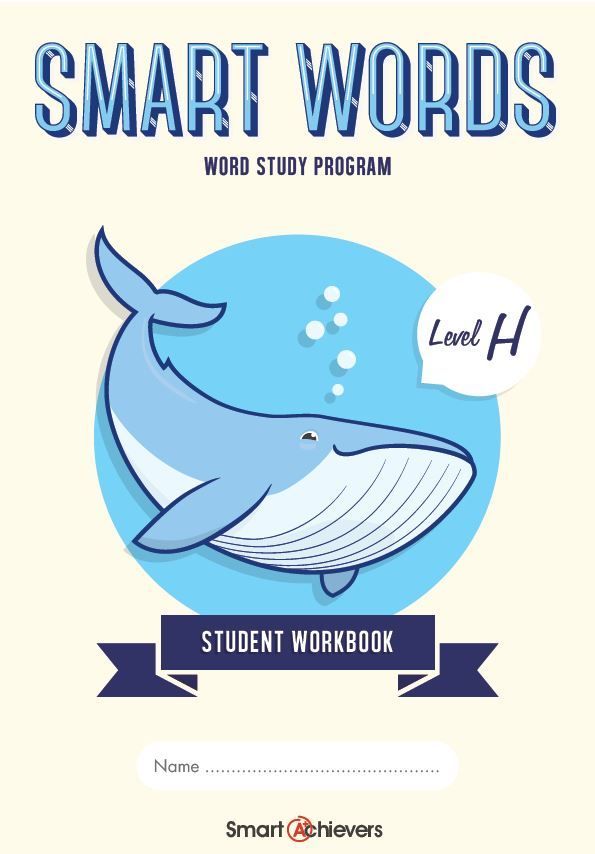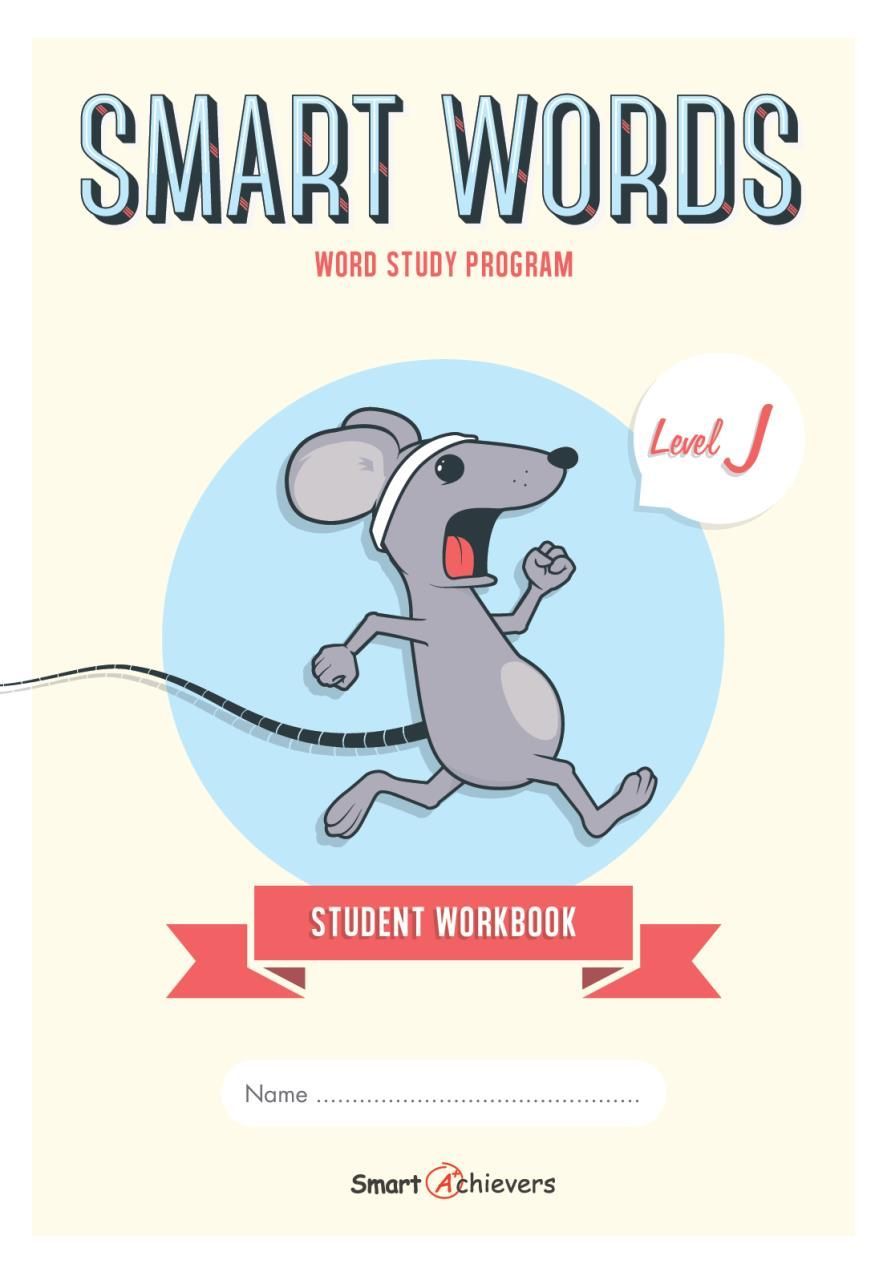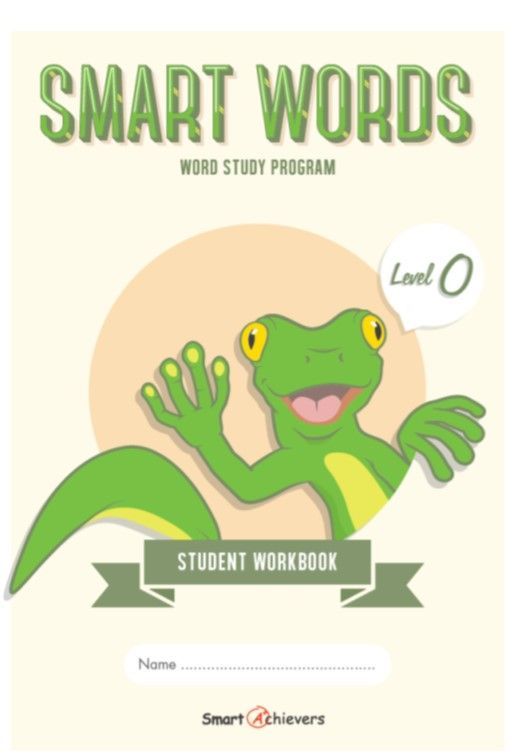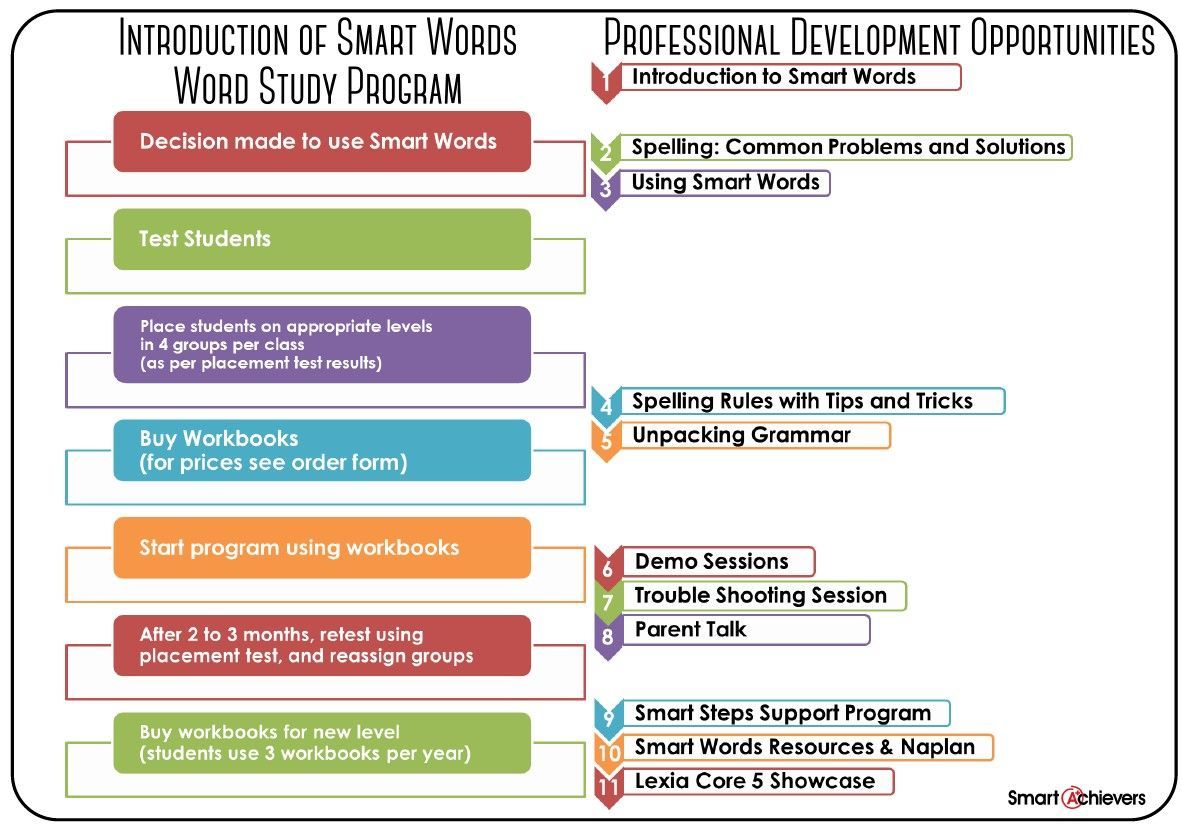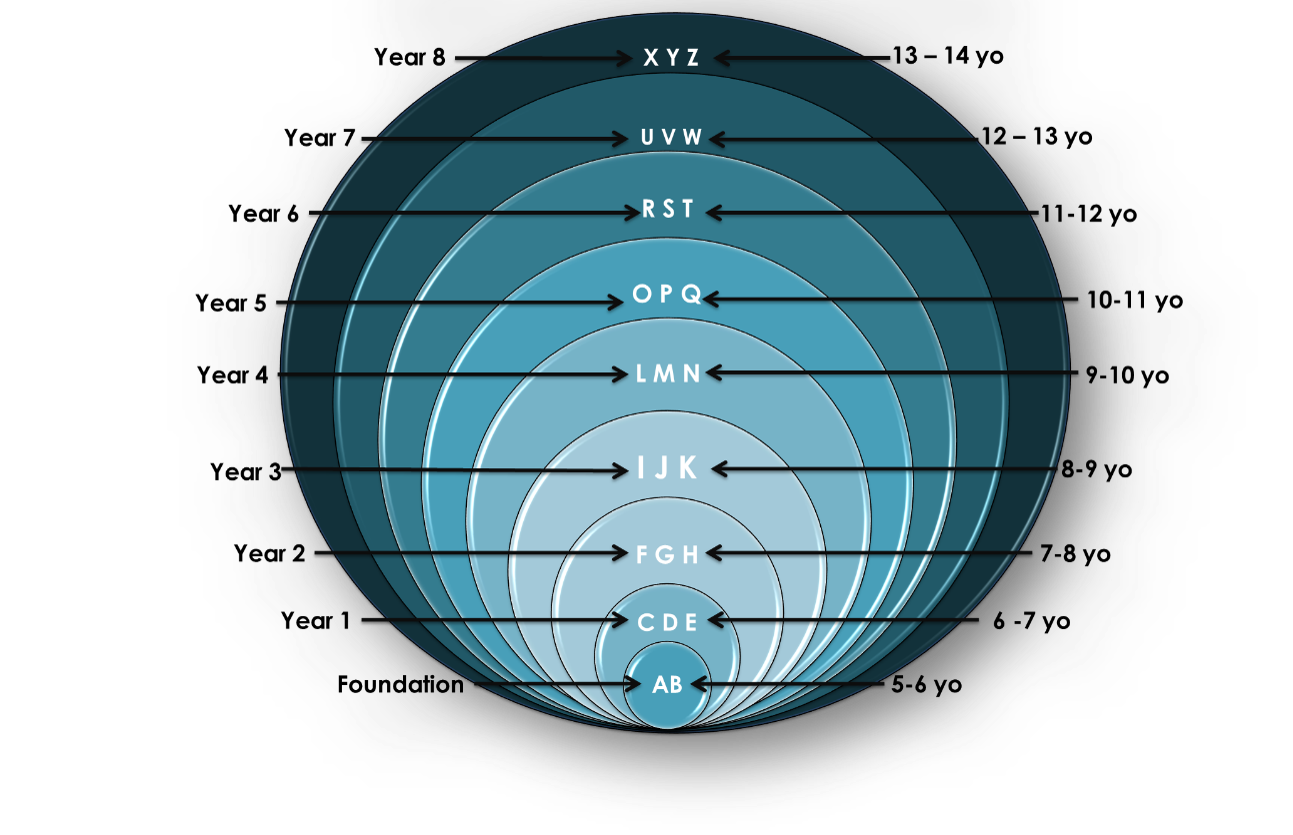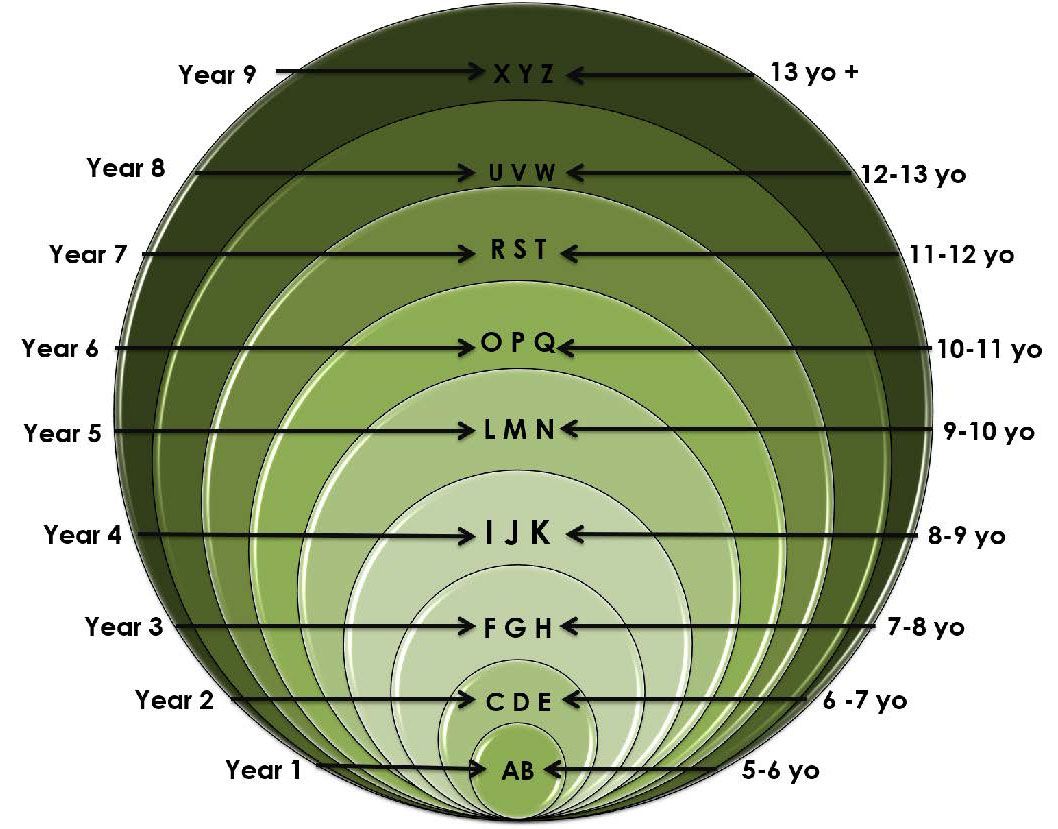Smart Words is a word study program that teaches students the underlying principles of spelling.
It follows a sequential, developmental approach, using word lists with common patterns as a tool for studying words. Borne out of Science of Reading research, the program fosters a strong spelling awareness and helps students develop a deeper understanding of how to spell correctly.
The program is made up of workbooks and other resources, with assisted presentations offered via Zoom.
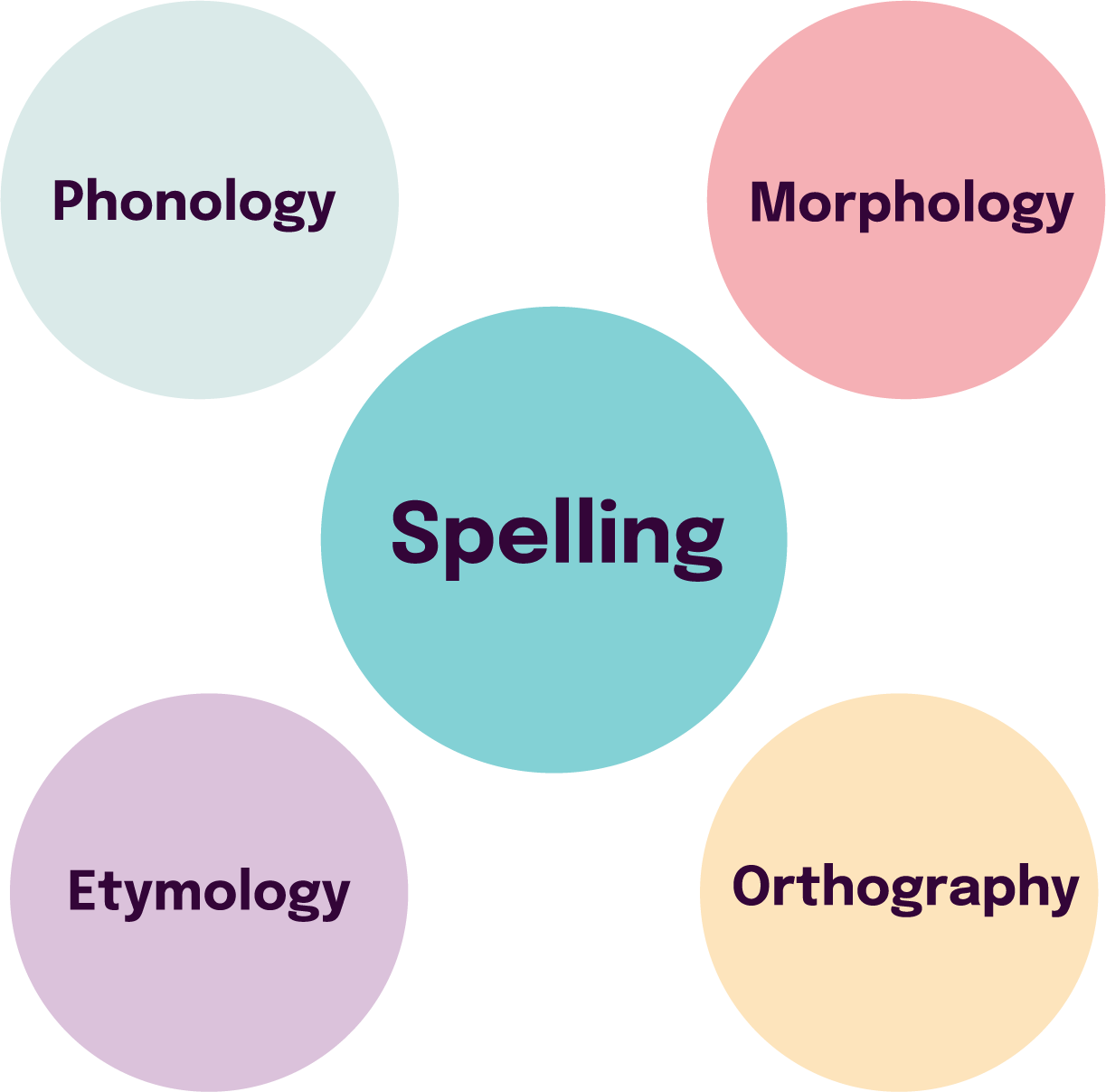
Getting Started with Smart Words
Smart Words is a word study program that teaches students “how” to spell words. It uses a sequential and developmental list of words (with a common pattern) as a tool to study words, develops a spelling consciousness, and an awareness of how to spell correctly.
